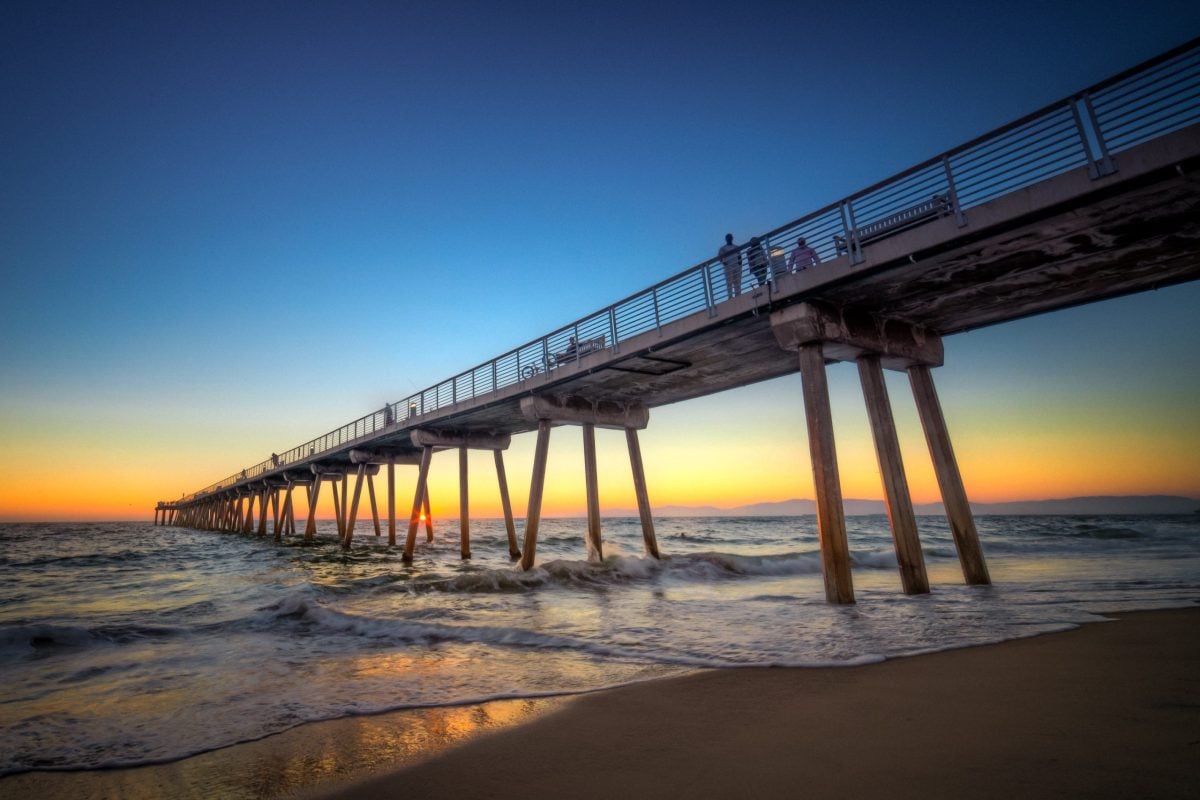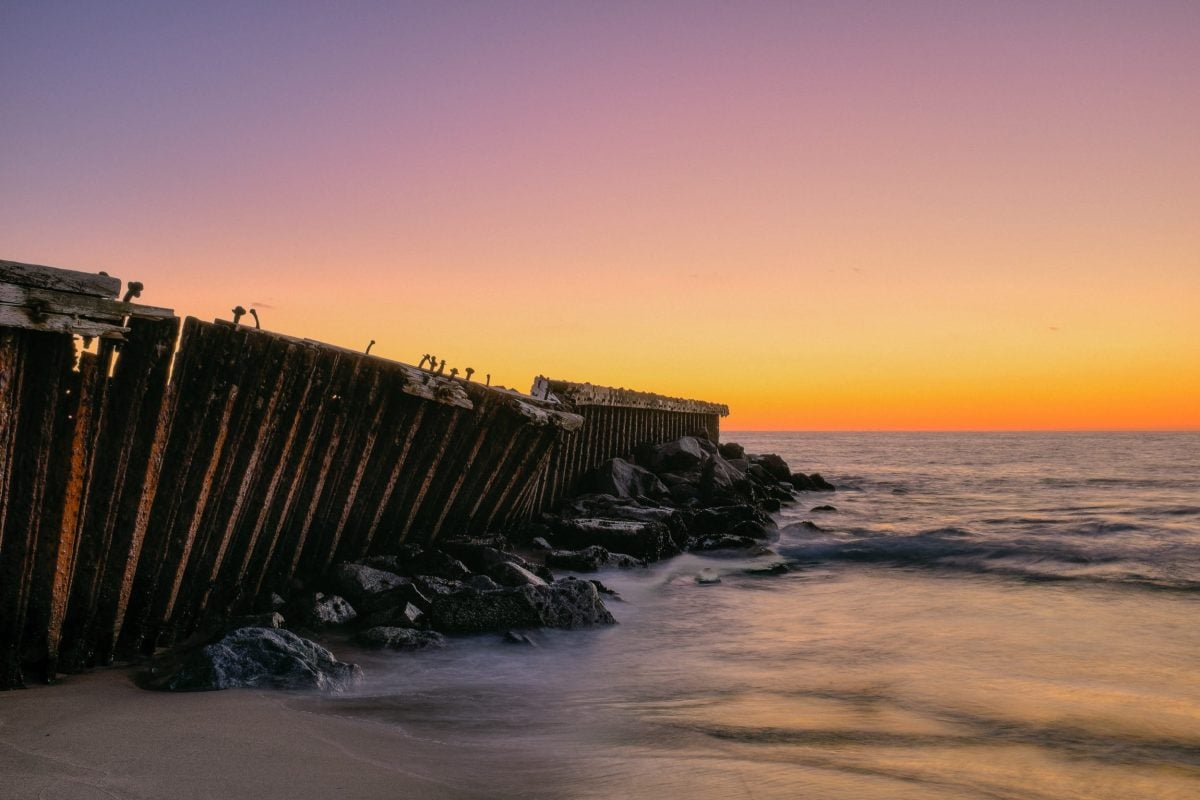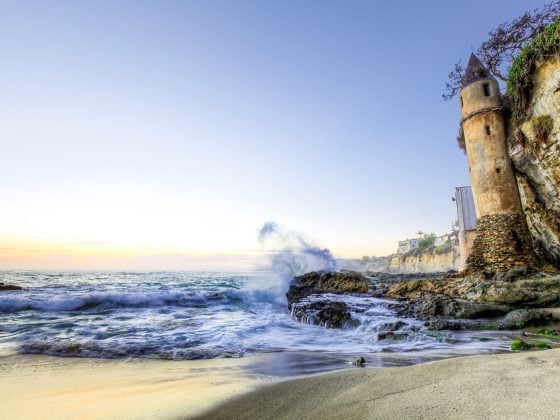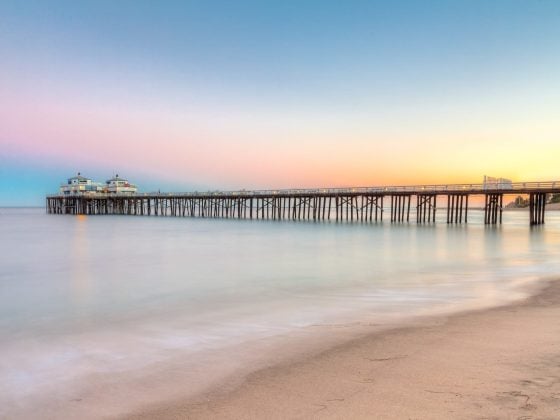Like most people, I love the beach, I love shooting there, and I always love great ocean and beach pictures. I grew up on the beach and have spent a lot of time in the water—hours a day surfing on summer break or between semesters. It’s safe to say I’ve learned a thing or two about the ocean and how it acts. I hope to share several photography tips I’ve picked up when shooting pictures of the sea in this post.
Beach Photography, Pictures of the Ocean, and Photography Tips
Shooting beach photography is one of the more difficult types of landscapes to capture. It’s dirty, wet, hard on your gear, hard on your body, and can be dangerous. Lately, I’ve been doing a lot of high-dynamic range (HDR) photography at the beach. HDR photography is even more challenging because timing is everything when trying to capture over three shots, which can take up to a minute to expose during the purple hour.
I’m posting this topic as a page that I will continue to update with new tricks, tips, and pictures of the ocean. I will continue to showcase more samples as I further expand, develop, and grow with my style of beach photography. I hope to share what I learn so other photographers can learn to get amazing results as I finally have. . . Finally.
Below is a list of photography tips and some of my beach picture samples. All of which are captured using simple HDR photography techniques.

This beach picture is of Victoria Beach in Laguna Beach, California. It’s one of the better examples of what HDR photography can do for ocean landscapes.
Photography Tips For Shooting Beach Photography
Use Weather Sealed Gear
This, of course, comes with a price tag. It’s just a recommendation because I’m always getting soaked when shooting near waves. You never know when a big one will come out of nowhere, consuming you in whitewash. If you’re not shooting near really calm waters, the waves will throw up a constant mist that collects on everything, including your camera gear. So, if you don’t have weather-sealed gear, you should bring extra rags to clean your gear. If you’re also out on a boat and shooting pictures of the ocean or even on a fishing trip, there is a constant mist that will build up a film on your gear, so again, I recommend weather-sealed gear.
Use UV Filters
Not just one, but maybe a couple. This is a great photography tip for beginners. Ditch the lens cap and go with one of these.
They come in handy at the beach because the gentle mist the waves throw up will tend to bead up on the front of your lens. If you’re shooting at a high F stop, it will ruin your shots. It’s very important to check and clean it constantly, which can be a task. As mentioned above, the water that beads up on the UV filter is salt water, so when you try to wipe it off, it leaves smears and streaks everywhere. I usually have to unscrew mine and use the inside of my shirt to wipe it clean.
I have been using a lot of Hoya UV Filters. I like Hoya because they are cheap but not too cheap. It’s a pretty decent mid-range brand with a good reputation. When you’re out taking pictures of the ocean, you’re going to wear down your gear a bit quicker than, say, going to Disney Land.
Shoot at Lower F-stops
When I take photos of landscapes, I often set my aperture somewhere around an F16. I typically want everything in focus or as much as possible in focus, especially with ultra-wide angle lenses where objects in the corners, like the sand or rocks, can be a lot closer to you than your subject. Lately, I’ve found that an f8 is usually fine and better optically. The biggest reason not to shoot at too high an f-stop is because of all the mist and water that collects on your front piece of glass. At a high f-stop, you see every piece of dust or water stuck to the front of your lens, and you’ll get a lot of it near waves.
Use a Tripod
This isn’t a requirement for shooting better beach pictures, but it does open up your options. With a tripod, you can shoot High Dynamic Range or HDR photos, Night Photography for just after the sunset, or Long Exposure photography to get that nice smooth-looking water.
Subject Matter is Everything
You’ll notice many of my Beach Photography takes place near some man-made structure, like a pier, a staircase, or a jetty. It could even be a crab or a cool rock. But unless the clouds are doing something truly amazing or you plan on making viral Internet inspiration posters, you’ll want to pay attention to your environment and find some subject to focus on. For beach photography, sunsets are nice, but they won’t tell any story that will capture a viewer’s imagination. The best photos have some story or drama happening, and even better if it’s an amazing sunset.
Samples of Some of My HDR Beach Photography

This beach picture shows three kids watching the sunset at the Oceanside Pier. It was an exciting night, and the tide was low.

This HDR photo of the ocean is taken at the Hermosa Pier in Hermosa Beach, California. Despite the lack of clouds, it was a very colorful night.

This is a common style found in many sea pictures. This was taken in Los Angeles at Dockweiler Beach.

This beach picture is of the Santa Monica Pier. It’s an HDR photo taken with a rather long exposure at night, and it’s one of my more popular examples of HDR Photography.

Another beach picture was taken at Hermosa Beach, California.
This is another ocean picture in which my tripod is actually in about a foot of water, taking a long-exposure, high-dynamic-range photo.

This is another HDR photo of Victoria Beach in Laguna Beach, California. It’s such a pretty place; I love shooting there.

Redondo Beach Pier. This is an HDR photo.
Be sure to check back for more photography trips and pictures of the ocean. This site is still fairly new, so I’ll be launching a newsletter very soon that will allow me to update you more easily.
| **This website contains affiliate links. We will earn a small commission on purchases made through these links. Some of the links used in these articles will direct you to Amazon. As an Amazon Associate, I earn from qualifying purchases. |






